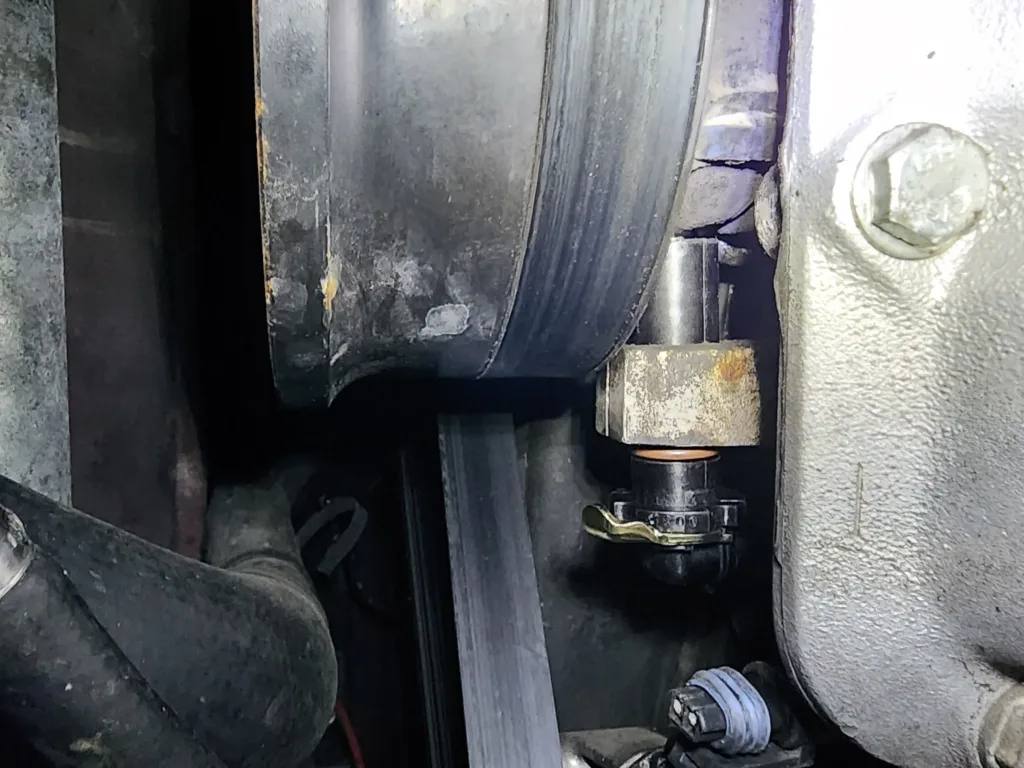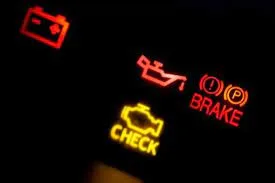Last updated on March 6th, 2024 at 04:55 pm
When your car hits a bump with the crankshaft position sensor, finding a quick fix might seem like the ultimate solution. However, the “Temporary Fix For Crankshaft Position Sensor” isn’t in the cards.
This vital component works at peak performance or not at all, ruling out any swift repairs. But, take heart! The silver lining lies in its replacement process.
Surprisingly, this critical part swap won’t dent your wallet, offering a practical remedy to restore your car’s smooth operation.
Appreciating its significance and the ease of replacement can ease your concerns until you’re ready to make that necessary upgrade.
Understanding the Crankshaft Position Sensor
So, what’s this crankshaft position sensor all about? Well, imagine it as the watchful eye in your car’s engine—whether it’s a gas-powered or diesel one. Its job is pretty crucial. It keeps tabs on how the crankshaft is moving.
But why does that matter? Because it talks to your car’s brain, telling it exactly when to inject fuel and ignite those spark plugs. Think of it like a conductor in an orchestra, making sure everything’s perfectly in sync for the best performance.
Finding this Sensor
You might be wondering, “Where’s this sensor hiding?” Usually, it hangs out on the main crank pulley or the flywheel. Sounds tricky, but it’s not too hard to spot once you know what you’re looking for.
If you’re scratching your head trying to locate it, don’t sweat it! There are loads of helpful online resources out there with pictures and fancy diagrams, tailored for different car models. They’ll guide you right to this super important part.
Temporary Fix For Crankshaft Position Sensor

Having trouble with your car’s crankshaft position sensor acting up? Don’t panic; there are a few tricks you can try before heading to a mechanic. These quick fixes aim to get your vehicle running smoothly enough to drive to a professional for a more lasting repair.
Let’s break it down:
1. Cooling Off
First things first, turn off your car and give it a breather. Let it chill for a few minutes. This cool-off period might just do the trick by resetting the sensor.
2. Unplugging
Next up, unplug the crankshaft position sensor. It hangs out near the bottom of the engine block, connected to the wiring harness. Disconnecting it could help shake things back into place.
3. Fuel Up
Check your fuel levels and top them off if they’re low. Surprisingly, sometimes a thirsty tank can throw off the sensor. A bit more fuel might ease the glitch.
4. Wire Check
Inspect the wiring harness linking the sensor to your car’s computer system. Look for any loose connections or damage causing the sensor woes.
5. Restart
Give your engine a fresh start by firing it up again, even if it’s just for a short spin. Sometimes, this quick restart can do wonders, resetting the sensor’s balance.
Remember, these temporary hacks are just a Band-Aid. It’s crucial to still head to a professional as soon as you can. They’ll diagnose the issue accurately and give your car the TLC it needs for a more permanent fix.
RECOMMENDED POST How To Start A Car With A Bad Crankshaft Sensor
Signs of a Bad Crankshaft Position Sensor
1. Warning Lights

Your car’s dashboard might illuminate the check engine light early on, signaling an intermittent crankshaft sensor issue. Over time, this error becomes consistent. Use an OBD2 scanner for precise error codes.
2. Engine Misfires
When the sensor fails, it disrupts the engine’s timing, leading to misfires. This misalignment affects performance, fuel efficiency, and emissions. Ignoring it could result in severe engine damage.
3. Engine Vibrations
The engine’s delicate synchronization produces subtle vibrations. A failing sensor disrupts this sync, causing the engine to shudder or stall. Continued driving can heighten wear and tear.
4. Performance Decline
All the mentioned symptoms culminate in performance issues. Reduced power output, reluctance to reach higher RPMs, and engine knocks indicate a faulty sensor. This affects fuel efficiency, emissions, and engine longevity.
Reasons for Crankshaft Position Sensor Issues
Normal Wear and Tear
Over time, these sensors wear out due to extreme temperatures, vibrations, and contamination. As they age, their accuracy declines, leading to engine misfires and reduced performance. Sometimes, it might even stall the engine.
Installation Woes
Faulty installation is a common culprit. Loose sensors or incorrect alignment can trigger misfires or engine stalling. If it’s not snug or aligned right, trouble brews.
Water Troubles
These sensors aren’t fans of water. If moisture sneaks in, it causes corrosion, shorts in the electrical system, or even sensor failure. Watch out for water creeping in!
Faulty Wiring Woes
Worn or frayed wires that connect the sensor can cause electrical shorts, delivering incorrect readings or completely knocking out the sensor.
In a nutshell, these sensors throw in the towel due to wear and tear, poor fitting, water interference, or dodgy wiring. Suspect a crankshaft position sensor glitch? Test and replace it pronto to prevent further damage. Good news: testing and replacing them isn’t rocket science and won’t require fancy tools.
Keeping Your Crankshaft Position Sensor Healthy
Regular Maintenance
Follow your car manufacturer’s maintenance schedule. Regular inspections ensure your sensor stays in top shape.
Maintain Cleanliness
Dirt and oil buildup affect sensor performance. Clean the sensor and its surroundings regularly to prevent interference.
Protect From Harsh Conditions
Extreme temperatures and moisture strain the sensor. Park in covered areas and avoid harsh weather to minimize damage.
Opt for Quality Parts
When replacing sensor components, choose high-quality parts from trusted brands. Subpar parts lead to premature failures.
These straightforward steps aim to help everyone, including newcomers, understand and maintain a healthy crankshaft position sensor for smoother driving experiences.
FAQs on Temporary Fix For Crankshaft Position Sensor
How long does a crankshaft position sensor last?
Typically, a crankshaft sensor lasts 40,000 to 100,000 miles. Quality and maintenance affect its longevity
Can you reset a crankshaft position sensor?
No, it can’t be reset. If malfunctioning, it requires testing and a new sensor.
Can a crankshaft sensor be bypassed?
Bypassing a crankshaft sensor isn’t advisable. It’s crucial for ignition timing and fuel injection. Doing so might cause serious engine problems.
How much does a crankshaft position sensor replacement cost?
Replacement cost varies, averaging $50 to $200 depending on the vehicle. Always verify the part number for compatibility.
If my crankshaft position sensor malfunctions, how long can I drive?
Driving time varies. Prompt attention is advised due to potential fuel efficiency drops and engine damage risks.
Can an engine be damaged when driving with a malfunctioning crankshaft position sensor?
Yes, it may cause misfires, stalling, and engine damage. It’s best to address it promptly.
Final Thoughts on Temporary Fix For Crankshaft Position Sensor
In a nutshell, understanding temporary fixes for crankshaft position sensor issues is vital for every car owner. Remember, these quick remedies, like cooling down the engine or checking wiring, serve as a Band-Aid until a professional diagnosis and repair.
Prioritize your car’s health, ensuring the crankshaft position sensor’s proper functioning for a smoother ride. Handling these temporary fixes responsibly can keep your engine running until a permanent solution is in place.
Don’t overlook these tips; they might just save the day when facing crankshaft position sensor glitches. Always prioritize your vehicle’s well-being with temporary fix for crankshaft position sensor.
FOLLOW US
